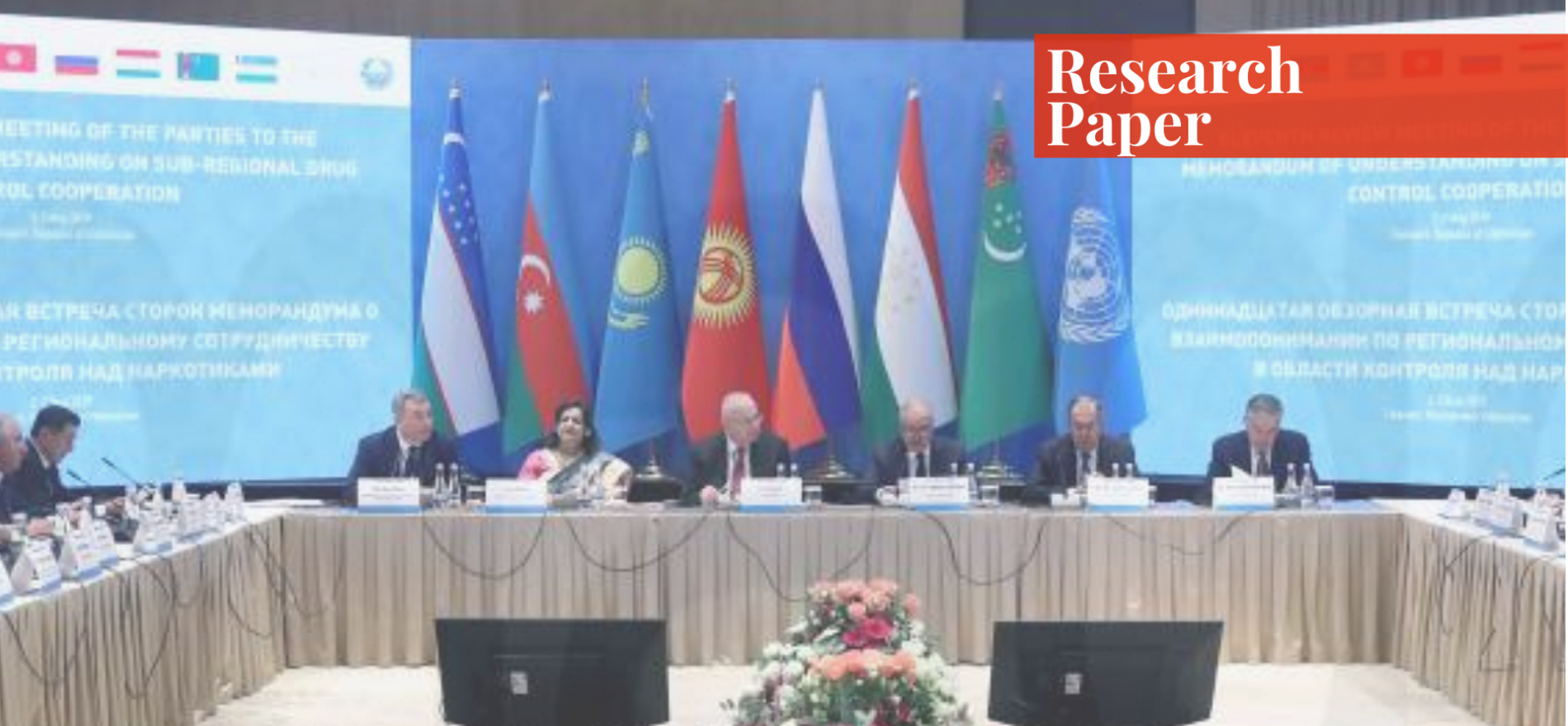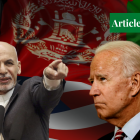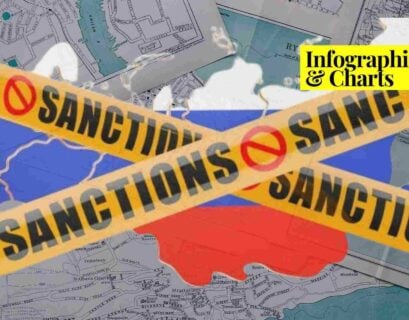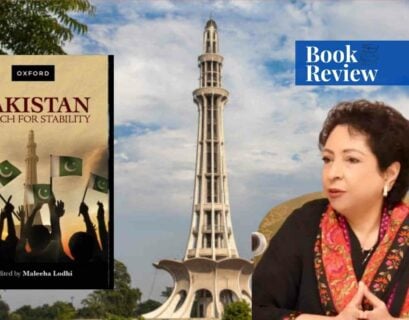Introduction
The Central Asian states hold immense importance in global politics. Their ideal location coupled with untapped resources has attracted the attention of great powers. This paper discusses the strategic importance of Central Asia in evolving international relations. It supports the strategic importance of the region through the Heartland and Rimland theories and discusses the security prospects under the framework of the Regional Security Complex Theory (RSCT).
The Importance of Central Asia
Without a doubt, Central Asia’s strategic significance in international relations is developing. Central Asia’s key significance for Washington, Moscow, and Beijing shifts with every country’s view of its vital interests. Washington centers fundamentally around Central Asia as a significant venue in the War on Terror.
Moreover, the region is seen as a theater where America would counter a revived Russia or China, or a spot to counter any expansion of Iranian influence. Moscow and Beijing view Central Asia as an imperative site for safeguarding critical domestic interests. This irregularity of interest is a central point in the competition among states for influence in the region.
Geographical Significance
Since the breakdown of the Soviet Union in 1991, Central Asia—which includes Kazakhstan, Kyrgyzstan, Tajikistan, Turkmenistan, and Uzbekistan—has needed to create diplomatic ties along with bilateral and global relations. Central Asia’s landlocked geography puts it at the core of Eurasia, neighboring regional powers Russia and China, and in close connectivity with other possible regional powers, Iran and India.,
Likewise, it is enveloped by the region of South Asia, South-East Asia, the Middle East, and Europe. Its central position has implied that the region has frequently been a significant part of powerful empires. It assumed a critical function in the strategic competition between the British Empire and the Russian Empire, known as “the Great Game”.
The region is also rich in petroleum and natural gas resources which are an attraction for major world powers. The Caspian energy reserves are considered some of the largest and therefore, most valuable in the world. The estimates vary between 50 to 110 billion barrels of oil, and from 170 to 463 trillion cubic feet of natural gas (Berivan, 2009). These days, the region’s geopolitical location at the intersection of Eurasia, notwithstanding the accessibility of rich energy assets in the locale, makes it a significant region in global politics.
The location of the five states gives them admittance to various potential trading partners by means of shipping lanes. Its geography, moreover, may situate the locale to go about as a potential corridor for exchanges and transport between Asia and Europe, or Asia and the Middle East. As per Sir Halford Mackinder, Central Asia is the core of the world, and in order for a great power to control the world, Central Asia must be heavily influenced and controlled by it.
Transnational Cooperation in the Region
Moreover, the five countries of the region have, since autonomy, needed to participate in integration and regional cooperation. Collaboration in a region, that keeps on confronting various local threats, doesn’t come without struggle. Nonetheless, together, the five states can take care of a significant number of their basic issues and establish a steadier and secure climate (MacFarlane, 2013).
It was on the 25th of December 1991 when the five states were officially perceived as autonomous. As indicated by Kavalski, “ethnically, semantically, historically, and socially, the states are comparative”. Ethno-regional rifts have, nonetheless, emerged due to the fake outskirts set up during the Soviet Union period.
This has been a convoluted issue for the Central Asian states, however, the five states have figured out how to determine the issues emerging from the artificial outskirts on a commonly useful premise. The five nations have the Soviet Union-experience in common and are at a similar phase in their country-building measure.
The region is wealthy in natural assets, particularly oil and gas assets, making it a pivotal and ever-growing player in regional and international energy markets. In addition, the geography of Central Asia places it in a position where it has the option to find potential partners for trade without looking excessively far away. Various, possibly enormous, markets are directly over the area’s fringes.
Europe and the United States are especially attracted by Central Asia’s gas supplies. They are concerned about Russia’s monopoly on natural gas exports to Europe and have been trying to break its natural gas pipeline monopoly. This gives Central Asia the option to give a substitute gas and oil supply.
Moreover, the rising China is taking a gander at expanding its gas providers, especially as it has gotten careful about obtaining a lot of gas from the United States. Central Asia, as a neighboring region, has become a possible substitute source. Energy collaboration with any regional power will impressively profit the Central Asian states. The collaborations will bring investments, infrastructure advancement, increased opportunities for employment, and development in other trading areas.
The region’s geopolitical significance for the post-Cold War international system has also increased due to its nation/state-building and modernization process. The region’s developmental ventures provide vast opportunities for infrastructure building to external sources (Blank, 2008). The regional powers have been influencing Central Asia for a long time. Their proceeded influence presents difficulties and prospects for ventures while adjusting apparent threats to their social, political, and territorial sovereignties.
Security Prospects of Central Asia
In modern-day Central Asia, the geopolitical conditions are certainly posing security challenges. These geopolitical realities include rivalries on energy resources and a surge in regional hegemony by Russia and China. On the premise of the energy security dilemma, it can be assumed that the security situation in the region is quite fragile.
Undeniably, in the post-independence scenario, the Central Asian states are confronting, both traditional and non-traditional, internal and external challenges on the political, economic, military, ethnic, religious, and societal level. Some of these challenges were resolved whereas, some are still prevailing. Such multifaceted circumstances imply that these states need to seek common security goals to address problems consisting of both internal and external dimensions.
Internal and External Security Dimensions
Regional security challenges are predominantly characterized by their development in weak states, which is deemed common. These threats can essentially be categorized as follows:
- Inherited threats
- Insecurities during the transition period
- Threats due to regional and global geopolitical changes
The Central Asian states have been striving for stability and development of the entire region. These states of the Central Asian regionare stricken with unstable political systems and domestic issues including crime and corruption. Therefore, they have proven themselves to be incompetent, so far, in making any sound progress regarding participatory, transparent, and accountable government institutions (Swanstrom, 2004).
Central Asia, since its independence, has been characterized by border tensions. However, most of the boundary disputes between the five republics and China have been resolved. Russia and Kazakhstan, on the other hand, are facing serious border issues regarding the delineation of their 4,200 miles-long border. In contrast to that, Tajikistan and Kyrgyzstan decided to delimit one-half of their 579 miles shared border and peacefully settled the Fergana Valley conflict in 2007.
Intra-regional conflicts are heightened by the presence of vast energy reserves in the region. Kazakhstan, Turkmenistan, and Uzbekistan are rich in oil and gas reservoirs. Whereas, Tajikistan accounts for almost 90 percent of the water in the region (Macklin, 2000). This unbalanced distribution of water and hydrocarbons resources gives rise to energy-related issues and threats in the region.
Moreover, transnational organized crimes are influencing all sectors of development in the region. At the global level, they are reaching all way to Russia and Europe from Central Asia. Subsequently, regarding the drug issue originating from Afghanistan, a report from the United Nations Office on Drugs and Crime claims that in 2017, Afghanistan’s area for cultivation of opium increased to 328,000 hectares from 2016’s estimate of 201,000 hectares.
It also stated that Afghanistan’s opium production reached 9,000 metric tons in 2017 (“Afghan Opium Production”, 2017). Henceforth, indicating that the threat of multi-billion dollar drug trade is being facilitated by the poppy cultivation in Afghanistan. Once these drugs enter Central Asia, they are circulated to the neighboring regions. As a consequence, this drug trade has many regional security implications (Aben. 2019).
Furthermore, nuclear proliferation in the region, a legacy of Soviet weapons of mass destruction (WMDs), presents precarious security risks. Bearing in mind the geopolitical condition and the presence of WMD-related material in the present-day world, nuclear proliferation raises serious concerns for global powers. The major powers are particularly concerned about WMDs falling into the hands of terrorists and smugglers.
Apart from WMDs, the presence of terrorist groups themselves is a cause for concern. It is crucial for the republic to take into consideration the threats of radicalism and extortions for extremism. The Islamic Movement of Uzbekistan (IMU) presents an example of this threat. The movement initially aimed to overthrow the government of Islam Kasimov, the Uzbek president, and wanted to replace it with the caliphate. It has been quite active in the region since December 2002 (Kassenova, 2004).
External threats form an essential component of security as well. They not only include threats emanating from Afghanistan, Iraq, Russia, and NATO in the post-9/11 scenario but also non-traditional security threats like economic decline and environmental degradation. Hence, the Central Asian states have to focus on human security prospects as well and have a collective security approach.
Security Regionalism in Central Asia
Although the impetus behind the increased regionalism process in the region has been economic motives, security and peace have also become driving forces. Since the emergence of globalization, the intrastate and interstate conflicts have global implications which require states and global powers to head towards cooperation in both bilateral and multilateral relationships.
Likewise, in order to enhance their influence in the region and to deal with concerns related to energy security, the major powers worked with the republics to provide support for security initiatives. The eminent economic pacts and increased regionalism in terms of security manifest themselves in the form of the Shanghai Cooperation Organization (SCO), the Collective Security Treaty Organization (CSTO), and the NATO Partnership for Peace (Kleveman, 2004).
Theoretical Perspective
The Theories of Heartland and Rimland
The Heartland theory was presented by Sir Halford Mackinder in his work “Political Pivot of Geography” in 1904. This theory proposed that the region constituting the Eurasian landmass—that now constitutes the southern part of Russia—Central Asian landmass, and the eastern parts of Europe make up, what he called, “the Heartland.”
The Heartland has the largest landmass in the world, and according to Mackinder’s theory, whoever controls the Heartland, will control the World-Island—area including the continents of Asia, Africa, and Europe—and whoever controls the world island, will eventually control the whole world.
In 1942, Nicholas Spykman proposed the Rimland theory which countered Mackinder’s Heartland theory. According to Spykman, it is not the Eurasian landmass but the Eurasian coastal areas that are the key to controlling the world island. He argued that the Rimland contains the Heartland and thus controlling the coasts will create the pathway for the powers to control the world.
Both theories present the geographical importance of the area that now constitutes Central Asia, one in terms of land power and the other on the basis of sea power. However, in the modern-day politics of the region, we witness the implementation of the theory of Heartland more than the latter because the region is landlocked with no direct access to the sea.
Heartland theory is still relevant in the region’s politics as all the major powers—the US, China, Russia, and even the European Union—are somehow involved in the region. Either in political, economic, or strategic terms, all the major stakeholders in the world have a presence in the region.
In addition to the close proximity of the region to the conflict-prone regions of the Middle East and South Asia, it could have provided strategic depth to the US. But we witness that the US involvement in the region has only been limited to curtailing the influence of two regional powers i.e. China and Russia. Since the region’s independence from the former Soviet Republic, the US has been busy reducing the effects of the Soviet legacy.
China and Russia have economic as well as strategic interests in the region. Both states have a high energy demand and to fulfill their energy needs, the two major powers are economically attracted to the region. According to the USA’s point of view, both states may get into a conflict to gain hegemony in the region. However, so far, they have been cooperating on their mutual interests. For example, SCO acts as a regional platform for these two states to benefit from their mutual interests in Central Asia.
Furthermore, China is using the region’s proximity to different landmasses for the revival of the old Silk Road, which was the biggest land route for trade in the past centuries. It allows China to basically find an alternative to trade routes which are now solely dependent upon sea trade. Thus, we can conclude that the interests of major powers in the region reinforce the importance of Mackinder’s Heartland theory in analyzing the region’s value.
Regional Security Complex Theory
Regional Security Complex Theory (RSCT) was proposed by Barry Buzan and Ole Wæver. The theory suggests that the problems and security concerns of some states are so intertwined together that they need to be addressed collectively, rather than addressing each of those issues individually. The theory views security interdependence as a critical factor in the creation of regionally based clusters.
RSCT provides a framework for the analysis and comparison of regional security of different regions. If we take a look at the Central Asian region, we notice that these states, since their independence, have almost had similar national security and ethnic division concerns. First of all, all the five states in the region were vulnerable to the influence of their former empire’s successor state, Russia. Secondly, we see that even after years of independence, the Russian influence lingers upon each state.
Moreover, all these states have similar forms of government and share similar concerns regarding the extraction of their indigenous natural gas and petroleum reserves. Thus, we can see that all five of the Central Asian states can be considered a regional security cluster and their problems can be collectively taken into account since they are very similar to one another.
These states also face the same international security concerns including the growing involvement of major powers in the region’s political and economic affairs. Thus, we can say that the Central Asian states also form a regional security complex. The creation of regional organizations means that these states have also realized that their problems need to be solved at a collective front, allowing each state to address its individual vulnerabilities in an effective manner.
Great Powers’ Interest in the Region
Since the world system is now moving towards a multipolar world, the US hegemony is being threatened. In Central Asia alone, the US is facing challenges to its superpower due to China and Russia’s involvement. It is important to comprehend why great powers are interested in the region. As mentioned in the preceding points, it is clear that Central Asia offers an array of economic prospects for the major powers, including the access and control of valuable resources, favorable terms of trade, and some great trade routes.
Russian Interests
It’s pretty evident that Russia has the greatest connection with the region. It’s important to understand that Russia has three major foreign policy goals in the region. Its first goal is to promote and increase all kinds of security and military cooperation that involves an edifice of military bases in Central Asia; the second is to facilitate energy and pipeline projects in the region, and the third is to strengthen the integration of institutions of the Eurasian Economic Union.
Furthermore, Russia aims to ensure that the Central Asia states are stable enough for the safety of its own borders. It wants to see political stability in the region hamper the rise of Islamic fundamentalism through authoritative governments. The sole reason why Russia wants this narrative to persist is to inculcate the neo-colonial status-quo so that it could use it to exercise political leverage over its neighbors exclusively.
With that being said, Russia uses energy diplomacy through Gazprom and Rosneft to protect its infrastructure from foreign markets. Moreover, Russia has a significant influence in the region through the use of its soft power and it propagates the Russian culture through the use of media (Leidy, 2019). Thus, Russia has the broadest interests in the region. It has fought quite strongly in the post-soviet era to be the major partner for these states because it considers the five republics a part of its empire.
Chinese Interests
China has twofold reasons for being involved. It has security concerns with respect to its Xinjiang province but it is primarily involved because of its economic interests in the region. When we talk about security concerns, China tends to focus on domestic issues rather than on any security issue in Central Asia. China is particularly concerned about an uprising in the Xinjiang province.
Since the population of this province shares its ethnicity and religion with the Central Asians, China believes that there is a potential for instability among these groups. For this reason, it has engaged in highly securitizing the region, especially with regards to the weaker population, as any potential instability in Central Asia may spill over into China (Glaser, 2018).
As mentioned before, China’s major and primary interest is in the economic sphere which it has established through the Belt and Road Initiative (BRI). Even within this project, it is very much focused on Kazakhstan, and not that interested in the other Central Asian states. This is mainly because China’s trade with Central Asia only makes up 1% of its foreign trade.
While China is more focused on coastal states when it comes to BRI, it still sees potential in the region. In Central Asia, it recognizes a promising site for a transport hub for Chinese goods, both in Russia and Europe. The major blockage right now for the BRI projects is that a lot of the infrastructure to get goods from China to Russia and Europe still needs to be built. This large upfront investment has to be completed in order to take advantage of Central Asia’s potential to be a transportation hub.
Moreover, one cannot forget China’s interest in the energy resources that could be transported into China. They not only interest China from a trade perspective but also from the perspective of a beneficial agent in BRI. The projects need a lot of oil and gas and for that, they need pipelines from Kazakhstan which will connect China to the region.
BRI is a potential threat to the Russian influence as China can be another buyer of Central Asian oil and gas. This threatens the Russian monopoly on the pipeline but in its current state, Russia is not powerful enough to stop China’s policies and programs as it will benefit from BRI as well (Abbasi, 2013).
Moreover, despite the money and investments that have been put into the region, public opinion within Central Asia is still highly negative of Chinese investments. The masses of the region believe that the Chinese citizens will eventually try to buy large swaps of lands in Central Asia; they are worried that these projects could potentially backfire and leave the individuals and states more beholden to the Chinese government.
American Interests
In comparison to the other states, the United States has less involvement in the region. The major problem for the US is that Central Asia is not an immediate security interest or concern. This stands in direct contrast to Russia and China because they view the security and stability in Central Asia as necessary for their own regional security.
However, any instability in Central Asia does not directly threaten a lot of US interests. As a result, the US pays less attention to the region and invests less in its economic and security programs than its Russian and Chinese counterparts. Furthermore, Central Asia is more of a tertiary actor, rather than a primary or secondary one, in the US military strategy, counter-insurgency programs, and its return to great power politics.
Moreover, the US involvement is usually portrayed as a medium to counter Russian influence, great power politics, or Russian expansionism. This can be seen in the American policies concerning Ukraine and eastern Central Europe. Though, this does not mean that the US is not interested in Central Asia, but rather that the US policies lack long-term coherence. The one thing the US has been consistent on is its attempt to integrate Central Asian economies with the global market.
It’s important to point out that for a lot of the US policies to work, there needs to be a considerate amount of effort to address the corruption within the region and to institute reforms within states. These policies cannot be instigated by the US unilaterally in Central Asia as domestic pressure is needed for them to be effective.
It is important to note that since the Central Asian states are in close proximity to Afghanistan, a lot of them have cooperated with the US and invested in economic and security programs, policing, and funded US bases in the region. The fact that the US has been investing in these security programs encourages increased power consolidation that allows a lot of corrupt behavior to continue in the republics.
Furthermore, the US policy has changed over the years; in the past, it has been more lenient towards human rights abuses or lack of democratization in Central Asia. If the US indicted the Central Asian countries on these accounts, it would eventually lose support for the war on terror in Afghanistan.
While this has damaged the reputation of the US overall, it also means that the US investment has neither triggered a lot of democratization nor succeeded in the integration of the Central Asian economies into the global economy. Hence, the former Soviet republics are still reliant on the Russian Federation and China, despite the American investments, because the US has always focused on security above any other reform.
Conclusion
Though Central Asia is a strategically vital component in the world, which has been a source of attraction for both the regional and great powers, its significance has made it prone to any outside intervention. Moreover, the instability in the region caused by territorial and ethnic conflicts, and by unstable neighbors, has made foreign interventions almost necessary. Since the region itself is not strong enough to handle its issues unilaterally, its interdependence on other countries can never be disregarded.
References
- Berivan, A. (2009). Security regionalism in Central Asia [Bilkent University] https://core.ac.uk/reader/52925256
- McFarlane, C. (2013).The importance of Central Asia. Transnational cooperation and international significance. GRIN Verlag.
- Blank, S. (2008). The Strategic Importance of Central Asia: An American View. Parameters, 38(1), 73-87, doi:10.55540/0031-1723.2400.
- Swanstrom, N. (2004). The Prospects for Multilateral Conflict Prevention and Regional Cooperation in Central Asia. Central Asia Survey, 23(1), 41- 53. https://isdp.eu/content/uploads/publications/2004_swanstrom_the-prospects-for-multilateral-prevention-and-regional-cooperation.pdf
- Macklin, P. (2000). Managing Water in Central Asia. Royal Institute for International Affairs.
- United Nations Office on Drugs and Crime (2017). Afghan opium production jumps to record level. https://www.unodc.org/unodc/en/press/releases/2017/November/afghan-opium-production-jumps-to-record-level–up-87-per-cent_-survey.html
- Aben, D. (2019). Regional security in Central Asia: Addressing existing and potential threats and challenges. Eurasian Research Journal, 1(1), https://dergipark.org.tr/en/download/article-file/790991
- Kassenova, T. (2004). WMD proliferation threats in Central Asia. The Non-proliferation Review, 11(1), https://www.tandfonline.com/doi/abs/10.1080/10736700408436962
- Kleveman, L. (2004). The New Great Game: Blood and Oil in Central Asia. Grove Press.
- Leidy, A. (2019) The Great Power Rivalry in Central Asia. Wilson Center. https://www.wilsoncenter.org/publication/the-great-power-rivalry-central-asia
- Glaser, B.S. ( Host). (2018). Great power competition in Central Asia: A conversation with Theresa Sabonis-Helf. Center for Strategic and International Studies. https://www.csis.org/podcasts/chinapower/great-power-competition-central-asia-conversation-theresa-sabonis-helf
- Abbasi, M.U. ( 2013). Geopolitics of energy in Central Asia: New players on the old chessboard. Journal of Contemporary Studies 2(2). https://web.archive.org/web/20180424191727/https://www.ndu.edu.pk/fcs/publications/fcs_journal/JCS_2013_winter/4.Geopolitics_of_Energy.pdf
If you want to submit your articles and/or research papers, please check the Submissions page.
The views and opinions expressed in this article/paper are the author’s own and do not necessarily reflect the editorial position of Paradigm Shift.



















